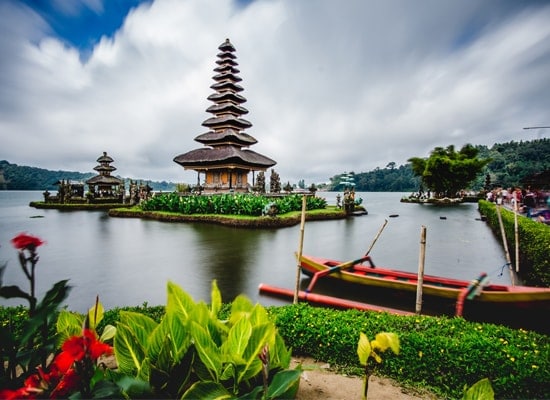
Burmese Days : Yangon Chapter
I reached Yangon from Bangkok at about 8.30 am on a rather cloudy morning. The rainy season had started and I had my worries about the trip getting hampered as I had only 9 days to cover Myanmar. Not having much information on Myanmar except that it was a dictatorship till the recent past, had recently opened up to tourism and that democracy has been restored, I hadn’t the faintest idea what was in store. Travellers I had met and blogs I had read, all suggested that its one of the best countries to visit in Asia and that one should go before mass tourism takes hold. I didn’t find many tourists, at least as compared to other south-east Asian countries, which most of them are, and maybe the fact that it was the rainy season helped. It actually turned out to be a beautiful surprise though, as I was to find out from my travels through the country during the next nine days.
THE CITY
Yangon seemed smaller and less developed compared to other big south-east Asian cities that I had visited. Yangon, though, is no longer the capital of Myanmar after the military moved the capital to Naypyidaw in 2006, but it still is the biggest city and main commercial center of Myanmar. It is an interesting city, with a laid-back charm and fewer people and vehicles on the road, though it’s slowly opening up to the outside world after years of military rule. The modernization even though slow, is still visible as many Chinese, Korean and Japanese companies are setting up businesses here and new high-rises coming up in the newer parts of the city.
The Chinatown area, which is in downtown Yangon is an interesting and bustling place with a positive energy to it. It is also where most of the hotels are located, so it is the tourist district as well but there weren’t many tourists in July. There are many local markets, shops, small restaurants and roadside eateries here. Close by there are a couple of boat jetties on the Yangon river if you fancy a boat ride or just want to hop into one of the boats that the locals take to cross over to the outskirts. The only Jewish synagogue in Asia and Sule Pagoda are both at walking distance from Chinatown and both are well worth a visit. The 99 meters tall Shwedagon pagoda is the most important and sacred pagoda in Myanmar and dominates the Yangon skyline. Both the Shwedagon Pagoda and the National Museum are interesting too and is just a short taxi ride away from the tourist district.

Boats on the Yangon River

Locals street markets are where you buy almost anything in Yangon
The largest ethnic group amount the Burmese are the ” Bamar ” people constituting about 70% of the population. Myanmar is a very ethnically diverse country with about 135 ethnic groups and subgroups of people. While about 90% of the people follow Taravada Buddhism there are also Christians, Muslims and Hindus.
For most of the people in Yangon as well as Myanmar, the traditional dressing is still the norm and you find very few people dressed in western clothes. Both men and women dress in their traditional clothing which is called lungi / longyi . A Myanmar longyi in a piece of cloth usually about 2 feet in length which is sewn at the middle, giving it a cylindrical shape. The way of tying the longyi to one’s waist is slightly different for men and women.
Applying Thanaka on the face is a common practice among most of the womenfolk and is said to be practice followed by the Burmese woman for more than 2000 years. It is yellowish-white paste made from the ground bark of certain trees. It is a distinctive feature of the culture of Myanmar seen commonly applied to the face and sometimes the arms of women and girls and is used to a lesser extent also by men.

Paan seller with thanaka on her face

Monks on their morning walk of alms
One cannot talk about Yangon and not talk about the food. Just like most of the big cities if South East Asia, Yangon is street food heaven with small pushcart shops, roadside makeshift eating places and small restaurants found in every nook and cranny of the city. Rice is the staple and sometimes a rice noodles soup called “Mohinga” is consumed, mostly during breakfast. For lunch and dinner rice is preferred by most and a typical meal comes with rice ( as much as you can eat), one bowl of meat ( mostly chicken, beef or pork…I had seen mutton but not all the places I ate at had it ) or fish / shrimp, couple of bowls of curried vegetables, a plate of raw or boiled veggies and greens, deep fried anchovies, a plate of boiled or raw vegetables, sour shrimp chutney and a soup ( broth with a piece of vegetable in it). I had been served as many as 12 items at a particular restaurant in Kalaw, but 8 to 10 items is normal.

Makeshift Street food stalls are very popular all over Myanmar

“Mohinga ” a dish of fish spicy tangy fish soup and noodles
Share this post
Experience | Adventure | Food | South East Asia | Ladakh | Offbeat | Himalayas | Cities |
Treks | North East India | Journey | Trains | Backpacking | Myanmar | Thailand | Vietnam | Indonesia | Cambodia | Laos | Bhutan | Nepal | Sri Lanka | Himachal | Kerala | Karnataka | Festival | Wildlife | Photography | Heritage | Culture


